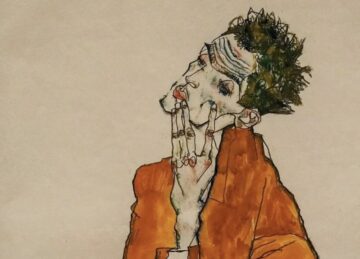Michael Hirsh in Foreign Policy:
 After the Soviet bloc began to disintegrate on his watch, Reagan was—and still is—mythologized as the primary victor of the Cold War.
After the Soviet bloc began to disintegrate on his watch, Reagan was—and still is—mythologized as the primary victor of the Cold War.
Meanwhile, Carter, who died Sunday at 100, is remembered as a somewhat weak leader, preaching naively about human rights, lamenting energy shortages and malaise in his singsong Georgia accent, and practically being hounded from the White House by the 444-day-long Iranian hostage crisis.
So, it may seem strange that Carter, even more so than Reagan, is revered to this day among those who fought on the true front lines of the Cold War: the former dissidents of the Soviet Union and Eastern Europe. “They still see him as the messiah,” Svetlana Savranskaya, a scholar of the Soviet period at George Washington University, told me in an interview. “Their eyes shine when they talk about him.”
Perhaps the least understood dimension of Carter’s much-maligned, one-term presidency was that he dramatically changed the nature of the Cold War, setting the stage for the Soviet Union’s ultimate collapse. Carter did this with a tough but deft combination of soft and hard power. On one hand, he opened the door to Reagan’s delegitimization of the Soviet system by focusing on human rights; on the other hand, Carter aggressively funded new high-tech weapons that made Moscow realize it couldn’t compete with Washington, which in turn set off a panicky series of self-destructive moves under the final Soviet leader, Mikhail Gorbachev.
Enjoying the content on 3QD? Help keep us going by donating now.

 Billions of cells die in your body every day. Some go out with a bang, others with a whimper. They can die by accident if they’re injured or infected. Alternatively, should they outlive their natural lifespan or start to fail, they can carefully arrange for a desirable demise, with their remains neatly tidied away.
Billions of cells die in your body every day. Some go out with a bang, others with a whimper. They can die by accident if they’re injured or infected. Alternatively, should they outlive their natural lifespan or start to fail, they can carefully arrange for a desirable demise, with their remains neatly tidied away. The U.S. population will age and continue to see low growth in 2025, three experts have told Newsweek.
The U.S. population will age and continue to see low growth in 2025, three experts have told Newsweek. In his newsletter, Sam Harris
In his newsletter, Sam Harris  Here are some of the most important studies to date documenting how COVID-19 affects brain health:
Here are some of the most important studies to date documenting how COVID-19 affects brain health: Even if you haven’t read Robert Musil’s unfinished modernist masterpiece, The Man Without Qualities, you probably agree that it has a great title. If you have read it, I’m sure you agree, because the novel returns obsessively to the theme of how its main character, Ulrich, can’t quite get his act, or, more fundamentally, his personality, together. But I’ve come up with an even better title. I think Musil should have called his novel The Man Without Philosophy.
Even if you haven’t read Robert Musil’s unfinished modernist masterpiece, The Man Without Qualities, you probably agree that it has a great title. If you have read it, I’m sure you agree, because the novel returns obsessively to the theme of how its main character, Ulrich, can’t quite get his act, or, more fundamentally, his personality, together. But I’ve come up with an even better title. I think Musil should have called his novel The Man Without Philosophy. “All Life Long,” the title of the most recent album by the composer and organist Kali Malone, is taken from a poem by the British Symbolist author Arthur Symons: “The heart shall be weary and wonder and cry like the sea, / All life long crying without avail, / As the water all night long is crying to me.” The poem appears as an epigraph in W. E. B. Du Bois’s “The Souls of Black Folk,” which is where Malone found it. Beneath Symons’s lines, Du Bois supplies musical notation for the opening phrase of the spiritual “Nobody Knows the Trouble I’ve Seen.” The topic, then, is sorrow, songs of sorrow, sounds of sorrow.
“All Life Long,” the title of the most recent album by the composer and organist Kali Malone, is taken from a poem by the British Symbolist author Arthur Symons: “The heart shall be weary and wonder and cry like the sea, / All life long crying without avail, / As the water all night long is crying to me.” The poem appears as an epigraph in W. E. B. Du Bois’s “The Souls of Black Folk,” which is where Malone found it. Beneath Symons’s lines, Du Bois supplies musical notation for the opening phrase of the spiritual “Nobody Knows the Trouble I’ve Seen.” The topic, then, is sorrow, songs of sorrow, sounds of sorrow. I
I Exosomes are tiny bubbles made by cells to carry proteins and genetic material to other cells. While still early, research into these mysterious bubbles suggests they may be involved in aging or be responsible for cancers spreading across the body.
Exosomes are tiny bubbles made by cells to carry proteins and genetic material to other cells. While still early, research into these mysterious bubbles suggests they may be involved in aging or be responsible for cancers spreading across the body. When asked why he didn’t begin writing novels until his 30s, the celebrated Czech author Milan Kundera said he didn’t have the requisite experience when he was younger. “This jerk that I was, I wouldn’t like to see him,” he added. Many of us look back at our former selves and wince to recall our immaturity. We vary quite a lot in the degree to which we feel friendly toward, and connected to, both our former and our future selves. Psychologists call this trait self-continuity, and suggest that it carries enormous weight in determining our long-term well-being.
When asked why he didn’t begin writing novels until his 30s, the celebrated Czech author Milan Kundera said he didn’t have the requisite experience when he was younger. “This jerk that I was, I wouldn’t like to see him,” he added. Many of us look back at our former selves and wince to recall our immaturity. We vary quite a lot in the degree to which we feel friendly toward, and connected to, both our former and our future selves. Psychologists call this trait self-continuity, and suggest that it carries enormous weight in determining our long-term well-being. My New Year’s resolutions have always had one thing in common: They’ve been all about me. Some years I’ve vowed to pick up my high school French again; some years I’ve sworn off impulse shopping; and some years (OK, every year) I’ve promised myself I’d go to bed earlier. The goal, though, has always been the same: to become a better, happier version of myself. But while there’s nothing wrong with self-improvement, experts say that focusing on our relationships with the people around us may go a long way to making us happier.
My New Year’s resolutions have always had one thing in common: They’ve been all about me. Some years I’ve vowed to pick up my high school French again; some years I’ve sworn off impulse shopping; and some years (OK, every year) I’ve promised myself I’d go to bed earlier. The goal, though, has always been the same: to become a better, happier version of myself. But while there’s nothing wrong with self-improvement, experts say that focusing on our relationships with the people around us may go a long way to making us happier.